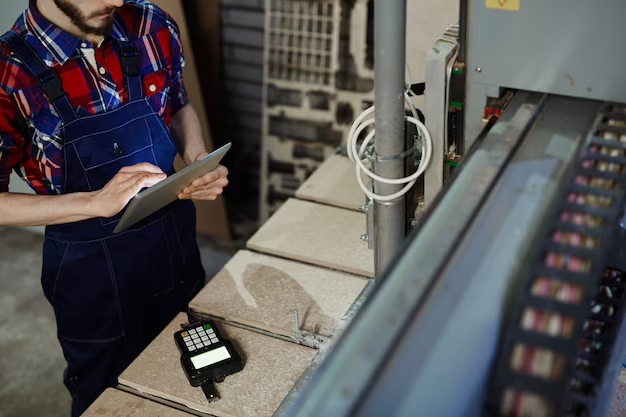Is Your Refrigerator Acting Up? Here's How to Check the Compressor Relay
Have you ever opened your refrigerator only to be met by lukewarm air rather than a refreshing chill? It's a scenario as baffling as it is inconvenient. Most people hope it's a quick fix, not an expensive overhaul. Often, the culprit behind such issues lies in the compressor relay, a small but crucial component that can affect the functionality of your fridge. In this guide, you'll learn everything you need to know to diagnose and test the compressor relay, all from the comfort of your home.
🛠️ Understanding the Refrigerator Compressor Relay
What is a Compressor Relay?
At its core, the compressor relay is an electrical component that acts as a switch to start the compressor. The compressor is responsible for keeping the refrigerant circulating through the fridge's coils and maintaining the cool environment required for food preservation. A faulty relay can prevent the compressor from starting, leaving you with a fridge that's more a food sauna than a storage miracle.
Signs Your Compressor Relay Might Be Failing
Before diving into testing, look out for these common symptoms of a failing compressor relay:
- Fridge not cooling: The most direct symptom, indicating that the compressor isn’t running.
- Clicking noises: If you hear repetitive clicking without the usual humming of the compressor, the relay might not be maintaining the connection.
- Overheating compressor: A compressor that's too hot can result from repeatedly trying (and failing) to start.
🔍 How to Diagnose a Compressor Relay Problem
If you notice any of the symptoms mentioned, it's time to investigate further. Testing a refrigerator compressor relay might initially seem daunting, but with a bit of patience and care, it’s quite achievable.
Tools You’ll Need
To start, gather these essential tools and safety gear:
- Screwdriver: To access the relay component.
- Multimeter: For testing conductivity.
- Needle-nose pliers: Helpful for handling small components.
- Protective gloves: Always prioritize safety.
Steps to Access the Compressor Relay
- Unplug the Refrigerator: Always start with safety. Unplugging the appliance prevents electrical shock.
- Locate the Compressor Cover: Usually found at the back or bottom of the fridge. Remove the screws holding the cover in place.
- Find the Relay: The compressor relay is typically attached to the compressor's side. It's a small plastic box with electrical wires feeding into it.
🧪 Testing the Compressor Relay: A Step-by-Step Guide
Once accessed, the next phase is testing. Here's how you can test the compressor relay using a multimeter, a multifunctional electrical tool that measures voltage, current, and resistance.
Performing a Relay Test with a Multimeter
- Remove the Relay: Carefully use pliers to disconnect the relay from the compressor, noting how wires are connected for reconnection later.
- Set the Multimeter: Adjust your multimeter to the lowest setting in ohms (Ω). A reading between 0 and ∞ is likely.
- Conduct the Test:
- Touch the multimeter leads to the relay’s terminals.
- Normal Reading: Typically, a functioning relay will show a reading between 0 and 1 ohm.
- Faulty Relay Indicators:
- If the reading doesn’t change (shows infinity): The relay is likely burnt out.
- If the reading is zero: It indicates a short circuit.
Visual Inspection for Physical Damage
- Burn Marks or Smell: Any signs of burning can indicate an electrical problem.
- Cracks or Breaks: Visible physical damage suggests the relay needs replacing.
🔄 When and How to Replace the Compressor Relay
If the tests confirm a bad relay, a replacement is necessary. Swapping out a compressor relay is often more cost-effective than calling for service or replacing the entire fridge.
Choosing the Right Replacement
- Compatibility: Ensure the relay is compatible with your fridge model. Check the appliance manual or manufacturer’s support for guidance.
Steps to Replace the Relay
- Purchase the Correct Relay: Based on your findings, buy a compatible relay.
- Reinstall the Relay:
- Attach the wires to the new relay as observed when removing the old one.
- Mount it back onto the compressor.
- Power it Up: Replace the compressor cover and plug the fridge back in.
🚦 Troubleshooting Other Related Issues
Sometimes, fixing the relay might not solve your problem. Here are other common issues related to a malfunctioning refrigerator:
Checking Other Electrical Components
- Overload Protector: It works in tandem with the relay to control the compressor's power supply.
- Capacitor: This starts the compressor; if it’s faulty, it might prevent compressor operation.
Dealing with Electrical Problems
- Fridge Plug and Socket: Ensure the plug and socket are in good working order.
- Frayed Wires: Check for exposed or damaged wires leading to the relay.
When to Call a Professional
- Beyond DIY: If you’re unable to identify the issue or handle repairs safely.
- Persistent Problems: Repeated issues may indicate underlying problems needing professional assessment.
🛡️ Key Takeaways and Final Thoughts
Here’s what you should remember when diagnosing and fixing a refrigerator compressor relay:
📌 Common Symptoms: Loss of cooling, clicking noises, and overheating.
📌 Diagnosis: Use a multimeter and visual inspection for a comprehensive assessment.
📌 Replacement: Opt for correct, compatible parts for longevity.
📌 Safety First: Always disconnect power before starting.
📌 Professional Help: If in doubt, or dealing with persistent issues, consider expert intervention.
By shedding light on the essential, yet often overlooked, compressor relay, and empowering you with the knowledge to test and replace it, I hope this guide helps you maintain the longevity and efficiency of your refrigerator.
Keep this guide handy next time your fridge leaves you in the lurch, and approach the compressor relay problem with confidence. With these tips in mind, say goodbye to unwanted warm breezes in your kitchen and hello again to crisp, cool beverages. 🥶🍹
